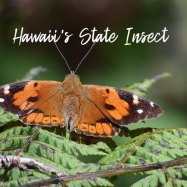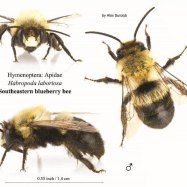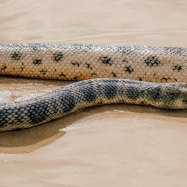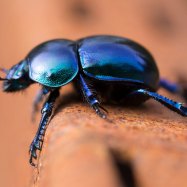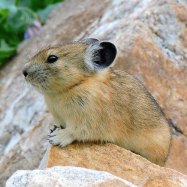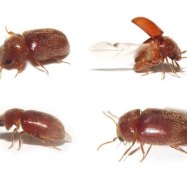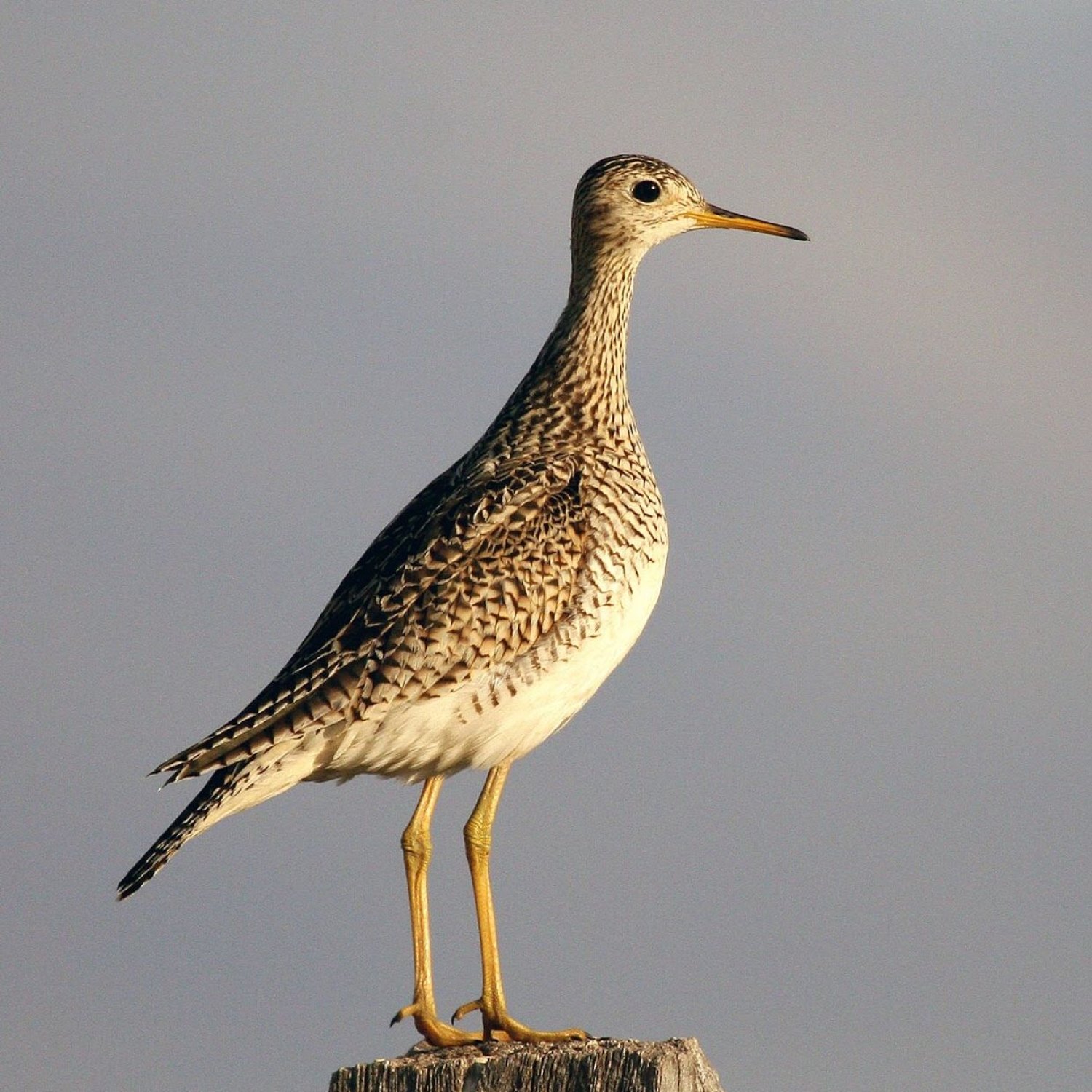
Upland Sandpiper
28-37 cm
The Upland Sandpiper, found in Central and Eastern North America, is a slender bird with long legs belonging to the Scolopacidae family. It measures 28-37 cm in length and is known for its distinctive call and unique mating dance. These fascinating birds can often be spotted in grassy fields and are an important part of their ecosystem. #UplandSandpiper #Birdwatching #NorthAmerica
Animal Details Summary:
Common Name: Upland Sandpiper
Kingdom: Animalia
Habitat: Grasslands, prairies, and fields
The Marvelous Upland Sandpiper: A Rare Beauty in the Fields
In the vast fields of grasslands and prairies of North and South America, there is a bird that is often overlooked but holds a beauty and grace that captivates those who are fortunate enough to see it. This bird is none other than the Upland Sandpiper, also known by its scientific name, Bartramia longicauda.Upland Sandpipers are members of the Animalia kingdom and belong to the Chordata phylum, which includes all animals with a spinal cord. They are a species of birds that fall under the class Aves and the order Charadriiformes Upland Sandpiper. These birds belong to the family Scolopacidae, which is a large and diverse family of shorebirds.
These stunning birds are primarily found in the central and eastern regions of North America, making the United States their country of origin. However, they can also be spotted in certain parts of South America, such as Argentina and Uruguay. They are migratory birds, and during the colder months, they travel to the warm and humid regions of South America.
One of the most distinguishing features of the Upland Sandpiper is its mottled brown and buff coloration. This patterned plumage helps them blend in with their surroundings, making it easier for them to hide from potential predators. Their body shape is slender, with a long neck and legs, adapted for their habitat and feeding habits.
Upland Sandpipers can grow up to 28-37 cm in length, with a wingspan of around 60 cm. Despite their small size, they have impressive flying abilities and can fly at speeds of around 40 km/h Urechis Unicinctus. These birds have a unique flight style, unlike most shorebirds that fly in a group formation. Upland Sandpipers prefer to fly alone or in pairs, with slow and graceful movements.
When it comes to their habitat, Upland Sandpipers prefer wide open spaces, such as grasslands, prairies, and fields. These areas provide an ample supply of their preferred food source, insects, such as crickets, grasshoppers, and beetles. They have a sharp and pointed beak, perfect for digging into the ground in search of their next meal. Their feeding method is insectivorous, making them beneficial for controlling insect populations in their habitat.
The geographical distribution of Upland Sandpipers covers a vast range, from the Great Plains to the eastern seaboard. They can also be found as far south as Central America and as far north as Canada. During their migration, they can also be seen in the Central and Northern regions of South America. They are only found in the Western Hemisphere, making them an elusive species to spot for birdwatchers in other parts of the world.
The Upland Sandpipers have a unique breeding behavior. They are a monogamous species, meaning they mate with one partner for life. They usually return to the same breeding grounds every year, where they engage in a beautiful aerial courtship dance. The male shows off his flying skills, while the female watches from the ground, before they both finally land and perform a synchronized display of bowing and calling.
After mating, the females lay a clutch of four eggs and incubate them for about three weeks. Once hatched, both parents take turns caring for the chicks until they are ready to fledge, which can take up to four weeks. During this time, the parents are fiercely protective of their young and will do anything to keep them safe from predators.
Sadly, the population of Upland Sandpipers has been declining in recent years due to habitat loss and degradation. This is a result of extensive agriculture and development, which has destroyed their natural grassland habitats. As a migratory species, they also face threats during their long journeys, such as collisions with structures and power lines.
Conservation efforts are being made to protect these magnificent birds, such as preserving grassland habitats and raising awareness about their plight. Fortunately, Upland Sandpipers are still relatively widespread and are not currently listed as an endangered species. However, continued efforts are necessary to ensure their survival and to maintain the balance of their ecosystem.
In conclusion, the Upland Sandpiper is a rare and beautiful bird that is often overlooked. With its mottled brown and buff colors, slender body shape, and graceful flight, it is a marvel to behold. These amazing birds play an important role in their grassland habitats, keeping insect populations in check, and providing an ecological balance. It is our responsibility to protect and preserve these birds for future generations to appreciate and admire. So, the next time you see a vast open field, keep an eye out for the Upland Sandpiper, and you may just catch a glimpse of this rare beauty in the fields.

Upland Sandpiper
Animal Details Upland Sandpiper - Scientific Name: Bartramia longicauda
- Category: Animals U
- Scientific Name: Bartramia longicauda
- Common Name: Upland Sandpiper
- Kingdom: Animalia
- Phylum: Chordata
- Class: Aves
- Order: Charadriiformes
- Family: Scolopacidae
- Habitat: Grasslands, prairies, and fields
- Feeding Method: Insectivorous
- Geographical Distribution: North and South America
- Country of Origin: United States
- Location: Central and Eastern North America
- Animal Coloration: Mottled brown and buff
- Body Shape: Slender with long legs
- Length: 28-37 cm
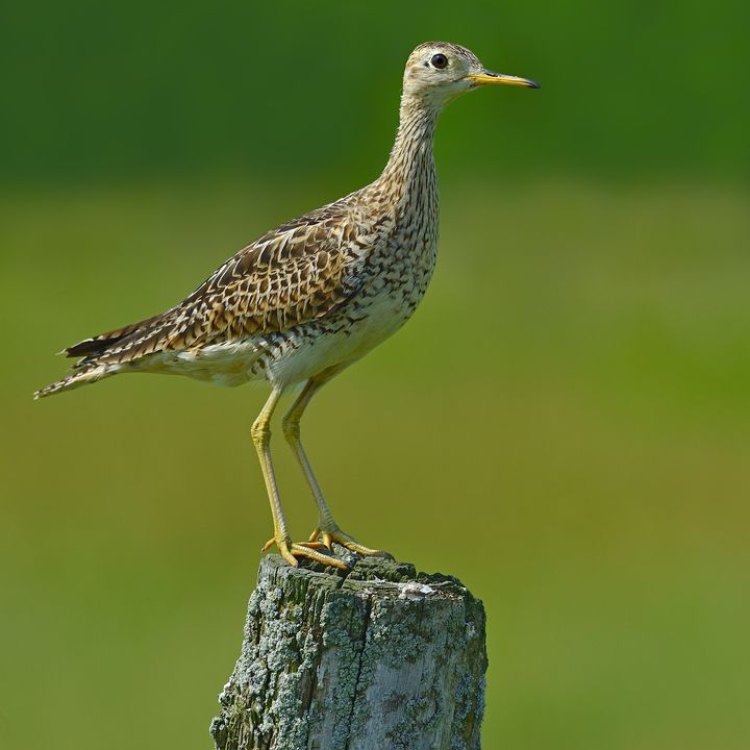
Upland Sandpiper
- Adult Size: Medium-sized
- Average Lifespan: 6 years
- Reproduction: Monogamous
- Reproductive Behavior: Nest on the ground and lay 4-5 eggs
- Sound or Call: Whistling or flute-like calls
- Migration Pattern: Long-distance migratory
- Social Groups: Solitary or in small groups
- Behavior: Diurnal and terrestrial
- Threats: Habitat loss, pesticide use, hunting
- Conservation Status: Near Threatened
- Impact on Ecosystem: Seed dispersal and insect control
- Human Use: Birdwatching, hunting
- Distinctive Features: Long neck and bill, distinctive walk
- Interesting Facts: Only shorebird species that primarily nests in grasslands
- Predator: Various raptors, foxes, and snakes
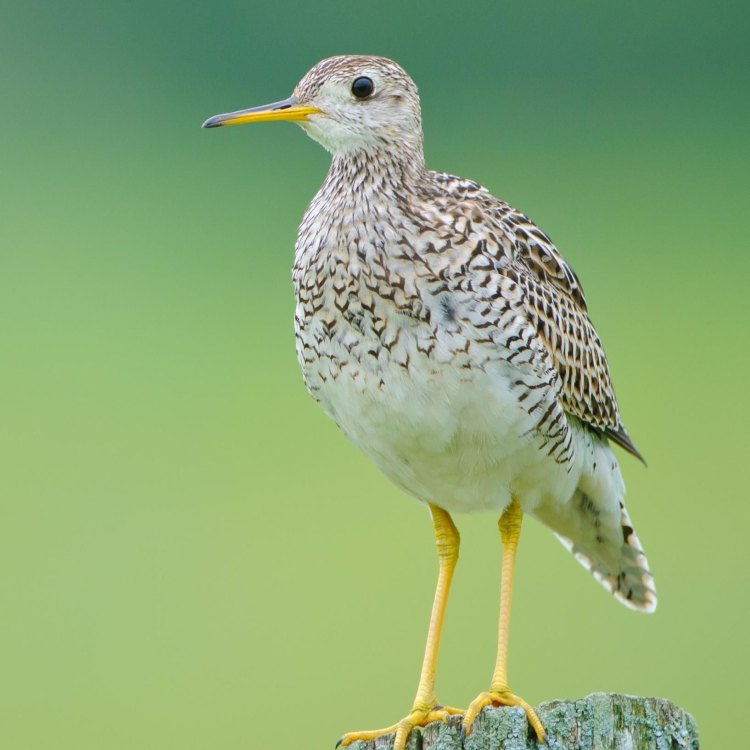
Bartramia longicauda
The Upland Sandpiper: A Unique Grassland Dweller and Seed Disperser
When one thinks of migratory birds, the image of a beautiful, colorful warbler might come to mind. However, there is one migratory bird that stands out from the rest - the Upland Sandpiper. This medium-sized shorebird is not only visually distinct but also has some fascinating characteristics and behaviors that make it a standout species in the avian world.The Upland Sandpiper (Bartramia longicauda) is a fascinating bird found in the grasslands of North America PeaceOfAnimals.Com. It is a medium-sized bird, with an average length of 12-15 inches and a wingspan of 23-26 inches. It weighs around 4-6 ounces. One can easily spot this bird due to its unique appearance. It has a long, thin neck, a brownish-gray body with black and white mottling, and a long, pointed bill. Its legs are pale yellow, and its distinctive walk is often described as "bobbing." This gives the Upland Sandpiper a distinct look that sets it apart from other shorebirds.
This fascinating bird has a long lifespan of about 6 years. However, the average lifespan of an Upland Sandpiper is slightly higher in captivity than in the wild due to lower predation and habitat loss. Speaking of reproduction, the Upland Sandpiper is monogamous, meaning it mates with one partner for the breeding season Uintatherium. This is a common behavior among shorebirds and helps establish a stable family unit for raising offspring.
In terms of reproductive behavior, the Upland Sandpiper is known for its unique nesting habits. Unlike most shorebirds that nest along the coast or in wetland areas, the Upland Sandpiper nests on the ground in grassy habitats. It constructs a shallow nest on the ground, and the female lays around 4-5 eggs. The eggs have a pale olive-green color with dark brown or black spots. Both parents take turns incubating the eggs, and after about 20-23 days, the chicks hatch.
The Upland Sandpiper is also known for its distinct vocalization, which adds to its charming character. These birds are skilled whistlers and produce a range of melodic, flute-like calls, often described as "up-slurred notes." These calls are a form of communication between mates, to defend their territory and to alert other sandpipers of nearby predators.
One of the most fascinating aspects of the Upland Sandpiper is its long-distance migratory pattern. This bird spends its breeding season in North America and migrates to South America during winter. It is known to travel thousands of miles and can be found in various countries such as Brazil, Argentina, Uruguay, and Paraguay during the non-breeding season. This impressive migration helps the Upland Sandpiper find suitable habitats and food sources throughout the year.
The Upland Sandpiper is known to be mostly solitary or can be found in small groups during migration. However, during the breeding season, it is more territorial and can be seen with its mating partner and young chicks. These birds are diurnal, meaning they are active during the day, and are mostly terrestrial, feeding on insects, spiders, and small invertebrates found on the ground.
Despite its unique characteristics and behaviors, the Upland Sandpiper faces numerous threats, leading to its Near Threatened conservation status. The main threat to the Upland Sandpiper is habitat loss, specifically the conversion of grasslands into agricultural fields. As the prairies and grasslands shrink, the Upland Sandpiper loses its breeding grounds and food sources. Other threats include pesticide use, which affects the bird's food supply, and hunting, where it is still legal in some states.
The Upland Sandpiper plays a crucial role in its ecosystem, despite its small size. As a seed disperser, it helps regulate plant growth and maintains a balanced ecosystem. Its diet also consists of insects, contributing to natural pest control in the grasslands. These birds are also prey for various raptors, foxes, and snakes, playing a significant role in the food chain.
Despite the threats and conservation concerns, the Upland Sandpiper continues to have a strong presence in the ecosystems it inhabits. It is highly valued by humans for its ornamental beauty and recreational purposes such as birdwatching and hunting. Countless birding enthusiasts travel to grasslands and prairies to catch a glimpse of this unique shorebird and its distinct vocalizations. Hunting is also a popular activity for Upland Sandpiper, although it is strictly regulated to maintain healthy populations.
In conclusion, the Upland Sandpiper is a fascinating and unique bird that deserves more attention and admiration. Its long neck and bill, distinctive walk, and grassland nesting habitat make it easily recognizable and stand out from other shorebirds. As a long-distance migratory bird, it faces several threats, including habitat loss and hunting, but continues to play a crucial role in its ecosystem. Through conservation efforts and proper management of its habitats, we can ensure the survival of this extraordinary bird for generations to come. So, next time you see a grassy field, keep an eye out for the Upland Sandpiper and appreciate its beauty and importance in our natural world.
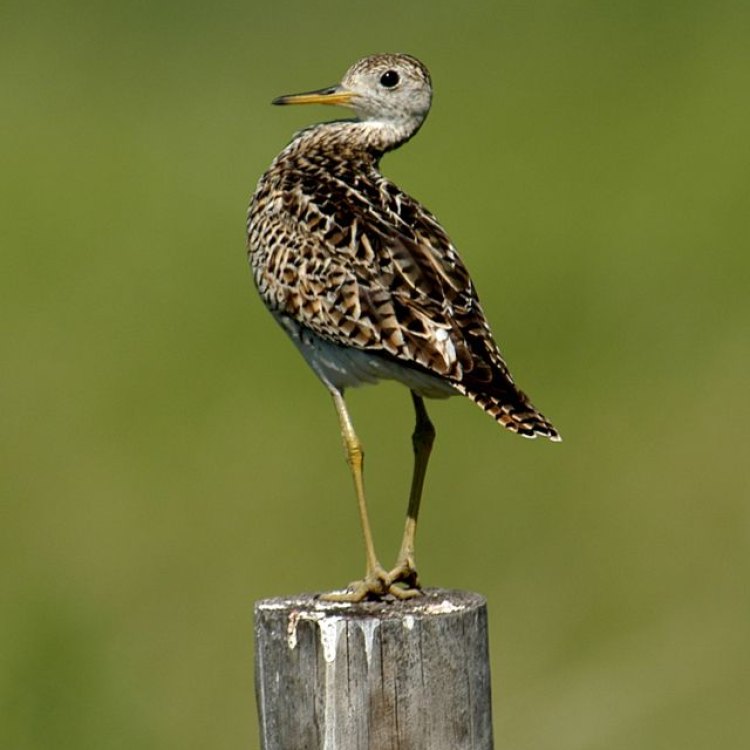
The Marvelous Upland Sandpiper: A Rare Beauty in the Fields
Disclaimer: The content provided is for informational purposes only. We cannot guarantee the accuracy of the information on this page 100%. All information provided here may change without prior notice.






